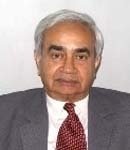India and Pakistan: Political Fallouts and Larger Questions of the LoC Violations
19 Jan, 2013 · 3797
PR Chari addresses possible causes of the skirmish and the criticality of resuming Indo-Pak dialogue
The ceasefire existing since 2004 along the Line of Control (LoC), which divides Kashmir between India and Pakistan, was recently breached. The consequent firings leading to the death of soldiers from both countries’ Armies is tragic and needless.
A well-understood mechanism exists to defuse tensions through flag meetings between local commanders. Issues that cannot be settled at a local level are referred to higher levels for negotiation and resolution. The important point to note therefore, in the context of the recent violations, is that these established mechanisms clearly did not work leading to tensions at the national level.
Why Do Border Violations Occur?
The LoC is well delineated on the map and recognised either by physical features or boundary markers. A complex medley of factors is generally responsible for these breaches, with personality issues intervening. A newly posted officer might, for instance, wish to impress his senior officer as having “josh” (transliterated to mean enthusiasm and courage). A superior officer might wish to improve his regiment’s position for its easier defence, by plugging an infiltration route or gaining higher ground. Naturally, the adversary understands these tactical manoeuvres and wishes to frustrate them; leading to frayed tempers, heightened instabilities and, if not defused, firings, casualties and greater tensions along the LoC. The Indian Army’s standard explanation that border firings by Pakistan are intended to facilitate the infiltration of its jihadist elements has become passé, therefore, with the passage of time.
Consider the facts of the present firings, killings and tensions in the Mendhar sector. The facts are murky, but it seems that a Pakistani soldier was killed in a small arms firing duel, and to deter the infiltration of militants in this area, the Indian Army constructed a bunker within the no-military-presence zone along the LoC. Pakistani protests were ignored, leading to the killing of two Indian soldiers on routine patrol duty in bad weather. What set this border incident apart from several others in the past was the barbaric beheading of one of these soldiers, which has greatly angered the Indian Army and people. The Pakistani explanation that jihadis operating in this area were responsible is questionable, since the LoC is heavily militarised on both sides. Such an assertion would imply they were moving around freely in this area, which seems problematic given the circumstances.
Political Fallouts of the Violation
The first political action of Pakistan’s was to stop the cross-border movement of people, as also cross-border trade between the two parts of Kashmir. For its part, India held up the agreement negotiated for relaxing visa restrictions, which included senior citizens being permitted visas on arrival at the Wagah border, and also denied entry to Pakistani singers and sportspersons. The linkage of border incidents with greater contacts between the two nations displays the extreme fecklessness of both countries as they are discouraging the very constituencies that harbour vested interests in promoting normalcy in India-Pakistan relations.
Fortunately, better sense has now prevailed, and New Delhi and Islamabad are taking steps to resume their interrupted dialogue. With the imminent withdrawal of the US and ISAF from Afghanistan in 2014, the need of the hour is for greater coordination between India and Pakistan to draw up a strategy for grappling with the post-2014 situation, rather than fritter away their energies in internecine strife.
Does, therefore, preventing border incidents, evolving confidence-building measures (CBMs) and deepening Indian-Pakistani ties require an “uninterrupted and uninterruptable” dialogue between the two antagonists? An ideal solution, no doubt, but too deterministic to appreciate the political realities of Indo-Pak relations. Dialogue for the sake of dialogue, with little hope of fruitful results is hardly likely to commend itself to hard-headed political establishments. Witness the humdrum manner in which the inter-Korean dialogue has continued for years after the Korean War ended in 1954, and became a joke. Consequently, faith must be reposed in the desire of the two leaderships to normalise relations and proceed to address their internal challenges.
Is Pakistani Soldiery Under the Control of its Military Leadership?
Let’s face it. Despite the growing inability of the Pakistani Army to provide for the country’s national security, the Pakistani civilian leadership only provides the façade behind which the Pakistan Army actually calls the shots. The country presently faces four serious threats to internal security - domestic terrorism that has even targeted the GHQ in Rawalpindi, as well as naval and air bases; continuing losses in the FATA region to Taliban attacks; American drone attacks along the Af-Pak border emphasising the country’s abbreviated sovereignty; and, secular strife that is tearing the fabric of Pakistan apart.
In this milieu, opening a fifth front just does not make sense. A plausible reason for the barbaric beheading of the Indian soldier, therefore, could be the extreme frustration that currently afflicts Pakistani soldiery. Coming from a restricted recruitment base, family linkages are strong among them and discipline has to be strictly enforced from above. Is that discipline eroding? In other words, is Pakistani soldiery still under the control of the Pakistani military leadership?


